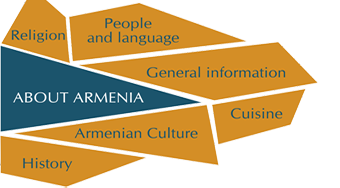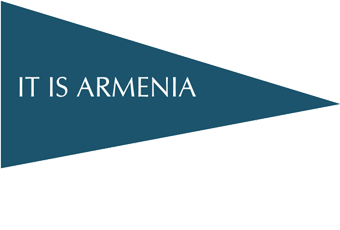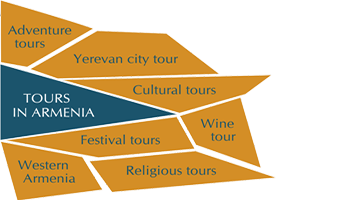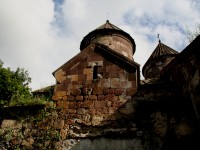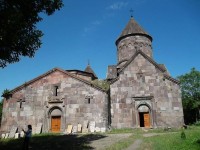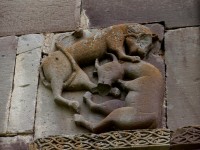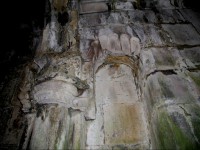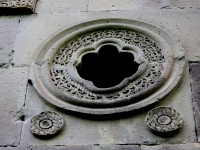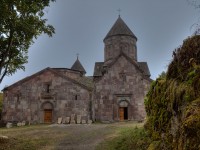Makaravank
Makaravank is a monastic complex of 10th-13th centuries, which is located in the Marz (region) of Tavush, 3 km to the south-west of the village Achajur on the flank of the hill Paytatap. The monastic complex of Makaravank by its originality, richness and variety of ornaments is similar to the churches Akhtamar, Bgheno Noravanq and Gandzasar. Unfortunately, the medieval historiography did not pass on enough information about the monastery. According to legend, the monastery was built by the master named Makar and his son. The son boasted and ornamented stones, and the father drew them up. The walls of the monastery gradually raised, and the master Makar lifted off the ground. He slept on the unfinished walls of the monastery until finished the building. Once the master Makar noticed that the stones did not match to each other and they had different ornaments. From above, he asked what was wrong with his son. He was told that he fell ill. Makar understood that he was no longer alive any more. He threw himself down from the top of the monastery and died. The masters was buried under the wall of the monastery, and the monastery was called Makaravank. The monastic complex consists of the old church, the main church, the narthex (gavit), the Astvatsatsin (Holy Mother) church, tabernacle, chapels, spring, fences, cemeteries, residential buildings and outbuildings. The main Church is a structure of domed style halls of medium sizes 13,5X9 m. It is elongated from the outside and with cross shape layout from the inside, with two-story vestries in the four corners. The church was built of pure hewn stones of light pink and copper felsites and mortar. The high relief of eagle holding a bull in its claws under the window of the southern wall is notable, which was emblem of the count house of Vachutyans. The main entrance is edged with the thinly weaved veil from the west side and, and the top is covered with ornaments of many-colored stones. The inimitable sculptures on the facade of the scene, the mythical animals with human heads, the writhing fish, the human appearance with the tools in his hand, with the inscription "Young" are ranked as the masterpieces of medieval Armenian art. From the detailed inscription on one beautifully carved khachkar (cross-stone) it becomes clear that the main church was built by Vardan, the son of the count Bazaz, during the abbacy of Bishop Hovhannes, in 1205. In the inscription of the facade stone of the entrance is mentioned the name Makaravank. The narthex (gavit) was built in the northern part of the church by the count Vache Vachutyan, in 1224. Both churches are reported to the narthex (gavit) through the doors. It is a square hall and belongs to the type of four-column narthexes (gavit). The western facade and the front entrance are decorated with sculptures. The tabernacle is a vaulted structure with a square layout, 5,3X5 m size and is adjacent to the old church. The oldest church of Makaravank, which is a structure of the 10th-11th centuries, is located in the north-eastern part of the complex. The structure, which is rectangular from outside and cross-shaped from inside is mainly built of semi-manufactured large stones of reddish tuff. The main elements of decoration are the exquisite floral and geometric ornaments on the facade of the stage, which are covered in diamond-shaped frame. The church of St. Astvatsatsin (Holy Mother) was built by the first Abbot of Makaravank, Hovhannes, in 1198. It is a cruciform structure from the inside, octahedral from outside and is built of pure hewn stones. The windows are surrounded by luxuriously decorated frames. The high reliefs of lions, birds and sockets are sculptured on the walls of the church. A stork holding a snake thrived round its throat, is depicted on one of them, and two, fighting with each other animals, are depicted on the other high relief. The epitaphs (tombstone inscriptions) of cemeteries and the khachkar (cross-stone) with luxurious ornaments are of particular interest.





